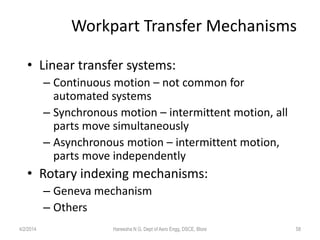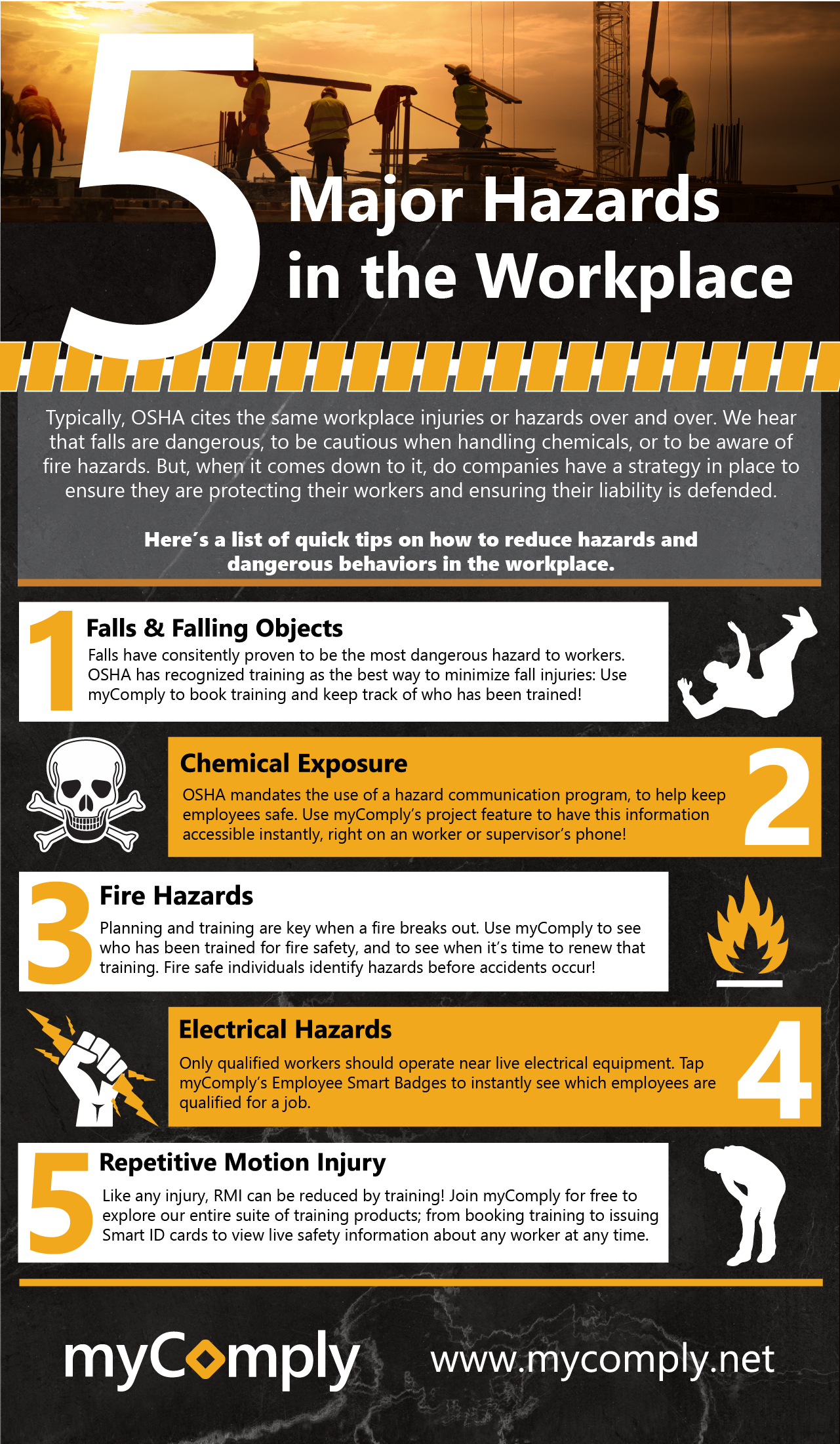Collars couplings cams clutches flywheels shaft ends spindles and horizontal or vertical shafting are examples of common hazardous. 4 Option-C Shearing Reason.

Infographic 9 Common Machine Safety Devices Numatic Engineering Now Motion Ai
Any type of rotating machine component can be considered a wrap point.

. Motions rotating including in-running nip points reciprocating transversing Actions cutting punching shearing bending 2. Part of the machinery that could be hazardous to workers include sharp edges hot surfaces moving parts flywheel pulley. Here are the basic safety hazards in the workplace.
C Sign a uniform Hazardous Waste Manifest D All of the above 7. A safety hazard is the most common type of hazard that is always present in a construction site. In this Alert hazardous energy is any type of energy in sufficient quantity to cause injury to a worker.
By Da_Elise293 09 May 2022 Post a Comment Jul 29 2019 Mechanical hazards. Some energy sources are obvious such as electricity heat in a furnace or something that might fall. Which of the following is a hazardous mechanical motion.
Hazardous Mechanical Motions and Actions. C It is permissible to pack different dangerous goods and non-dangerous goods. Which of the following is not a common type of hazardous mechanical motion.
Mechanical hazards are hazards created by the use of or exposure to either powered or manually operated equipment machinery and plant. Rotating circular movement of couplings cams clutches flywheels and spindles as well as shaft ends and rotating collars that may grip clothing or otherwise force a body part into a dangerous location. All mechanical motion is potentially hazardous.
Which of the following is the definition of point of operation. Avoid pinch points by keeping machine guards in place. Guards removed or moving parts that a worker can accidentally touch.
Which of the following is not a common type of hazardous mechanical motion. A In-running nip points b Transversing c Shearing d Reciprocating. Which Argan Oil Is Best for Frizzy Hair.
Any electrical mechanical hydraulic pneumatic chemical nuclear thermal gravitational or other energy that can harm personnel CSA Z460-20 Control of Hazardous Energy - Lockout and Other Methods. It includes unsafe working conditions that can cause injury illness or death. Even smooth slowly rotating shafts can grip clothing and through mere skin contact force an arm or hand into a dangerous position.
View the full answer. Motions rotating including in-running nip points. Shearing is not a common method of mechanical hazardo.
What are the different types of machine guards. Which of the following is a description of a pullback device. The three basic types of hazardous mechanical motions and actions are.
OOOO a b c 0 In-running nip points Transversing Shearing Reciprocating 5 which of the following is a description of a pullback device. Unguarded machinery and moving machinery parts. Which of the following is not a common type of hazardous mechanical motion.
Hazardous energy is defined. Types of Hazards The three basic types of hazardous mechanical motions and actions are. What kinds of mechanical motion are hazardous.
MechanicalVibration ChaffingFatigue Vibration that can cause damage to nerve endings or Argan for Frizzy Oil. B Effectiveness of package must not be substantially reduced. A Gases must not be mixed.
Which of the following statements is true about packaging of hazardous materials. The most common types of machine guards are. Examples are abraded slings and ropes weakened hoses and belts.
The basic types of hazardous mechanical motions and actions are. The most common types of hazardous mechanical motion include. Hazardous Motions including rotating machine parts reciprocating motions sliding parts or updown motions and transverse motions materials moving in a continuous line.
Spills on floors or tripping hazards such as blocked aisles or cords running across the floor. Device that uses cable attached to hands which allows access to the point of operation when the slideram is up and automatically withdraws hands when the slideram begins to descend. It is not solely powered machinery that is hazardous for many manually operated machines eg.
The basic types of hazardous mechanical motions and actions are. These different types of hazardous mechanical motions and actions are basic in varying. Electrical hazards like frayed cords missing ground pins improper wiring.
Transverse Motions A transverse motion occurs in a straight continuous line that may strike or catch an employee in a pinch or shear point created by the moving part and a fixed object. The rotating components are often shafts such as the PTO. Typically occurs when devices exceed designed capacity or are inadequately maintained.
These types of hazards are often found in power transmission systems such as belt drives chain drives and gear drives. A wide variety of mechanical motions and actions may present hazards to workers operating or working around machinery. These can include the movement of rotating members reciprocating arms moving belts meshing gears cutting teeth and any parts that impact or shear.
Addition to in-running nip points pinch points which occur when two parts move together and at least one moves in a rotary or circular motion that gears rollers belt drives and pulleys generate the following are the most common types of hazardous mechanical motion. All mechanical motion is potentially hazardous. Which of the following is not a common type of hazardous mechanical motion.
Examples of Hazardous Mechanical Motions. A rotating motion can be dangerous. Machinery-related hazards lockouttag out boiler safety forklifts etc.
MechanicalVibration ChaffingFatigue Vibration that can cause damage to nerve endings or material fatigue that results in a safety-critical failure. The following are all machine safeguarding requirements except. Hand-operated guillotines and fly presses can still cause injury if not properly safeguarded.
Machinery movement basically consists of rotary sliding or reciprocating action or a combination of these. These different types of hazardous mechanical motions and actions are basic in varying combinations to nearly all machines and recognizing them is the first step toward protecting workers from the danger they present. The National Institute for Occupational Safety and Health NIOSH requests assistance in preventing the death or injury of workers exposed to the unexpected or uncontrolled release of hazardous energy.
Hazardous Motions including rotating machine parts reciprocating motions sliding parts or updown motions. A wide variety of mechanical motions and actions may present hazards to the operator. Area on a machine where the work is performed.
Mechanical injuries are mostly caused either by contact or entanglement with machinery. What Is Not a Common Type of Hazardous Mechanical Motion. Reciprocating motions may be hazardous because during the back-and-forth or up-and-down motion a worker may be struck by or caught between a moving and a stationary part.
Common sources of hazardous energy. Some safety hazards are a function of the work itself.

Types Of Hazards National Association Of Safety Professionals

High Volume Production Systems

Ip Ratings Your Complete Guide To Ip Ratings

5 Major Hazards In The Workplace Mycomply Safety Tips Statistics
0 Comments